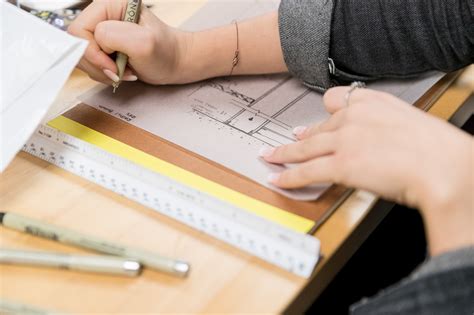Introduction
An internship in interior design provides aspiring designers with invaluable practical experience and a competitive edge in the industry. By immersing themselves in real-world projects, interns acquire the skills, knowledge, and connections necessary for a successful career in interior design.

Benefits of an Interior Design Internship
- Practical Experience: Internships offer hands-on experience in various aspects of interior design, including space planning, material selection, lighting, and client interaction.
- Skill Development: Interns gain proficiency in industry-standard software, design techniques, and project management methodologies.
- Networking: Internships provide opportunities to connect with professionals in the field, build relationships, and expand professional networks.
- Career Advancement: A successful internship can pave the way for a permanent position within the company or open doors to other career opportunities.
- Professional Development: Internships foster personal and professional growth by enhancing communication, problem-solving, and decision-making skills.
How to Find an Interior Design Internship
- Attend Career Fairs: Attend career fairs organized by universities, professional organizations, and industry events.
- Network with Industry Professionals: Reach out to interior designers, architects, and design firms to inquire about internship opportunities.
- Utilize Online Job Boards: Search for internships on websites like LinkedIn, CareerBuilder, and Indeed.
- Explore University Partnerships: Many universities partner with design firms to offer internship programs to students.
- Consider Freelance Opportunities: Offer freelance design services to gain experience and demonstrate your skills.
What to Look for in an Interior Design Internship
- Reputable Firm: Choose an internship with a well-established firm that aligns with your career goals.
- Mentorship Program: Look for programs that provide mentorship and guidance from experienced designers.
- Project Involvement: Ensure that the internship will provide active involvement in real-world projects.
- Company Culture: Find a firm whose values and working environment resonate with your own.
- Compensation and Benefits: Consider the compensation and benefits offered by the internship in relation to your skills and experience.
4 Essential Tips for Interior Design Interns
- Be Proactive: Take initiative in seeking out responsibilities and learning new skills.
- Build Relationships: Establish positive relationships with mentors, colleagues, and clients.
- Attend Industry Events: Participate in industry conferences, workshops, and exhibitions to expand your knowledge and network.
- Seek Feedback: Regularly request feedback from your mentor to improve your work and identify areas for growth.
Pros and Cons of Interior Design Internships
Pros:
- Practical Experience: Hands-on experience in the field.
- Skill Development: Proficiency in industry-standard software and techniques.
- Networking Opportunities: Connections with industry professionals.
- Career Advancement: Potential for permanent employment or other opportunities.
- Professional Development: Growth in communication, problem-solving, and decision-making skills.
Cons:
- Unpaid or Low Pay: Internships may not offer compensation or provide wages below market value.
- Limited Duration: Internships are typically for a fixed period, limiting the time for experience gain.
- Competition: High competition for internships in reputable firms.
- Workload: Internships can involve a heavy workload and demanding schedule.
- Unclear Career Path: The transition from internship to permanent employment may not be guaranteed.
Frequently Asked Questions about Interior Design Internships
1. What are the eligibility requirements for interior design internships?
Eligibility varies depending on the internship, but typically requires enrollment in an interior design program or recent graduation.
2. How long do interior design internships typically last?
Internship durations range from 3 to 12 months, with summer internships typically lasting 10-12 weeks.
3. What is the average salary for interior design interns?
According to the National Association of Colleges and Employers (NACE), the average annual salary for interior design interns in the U.S. is $35,000.
4. What are the potential career paths after completing an interior design internship?
After completing an internship, interns may pursue roles as interior designers, project managers, space planners, or furniture designers.
5. What is the job outlook for interior designers?
The U.S. Bureau of Labor Statistics projects a 7% job growth for interior designers between 2021 and 2031, faster than the average for all occupations.
6. What are some resources for finding interior design internships?
Internship opportunities can be found on job boards like LinkedIn, CareerBuilder, and Indeed, as well as through university partnerships and networking with industry professionals.
7. What is the difference between an internship and a co-op?
Internships provide practical experience for a limited period, while co-ops alternate periods of academic study with paid work experience in the field.
8. What is the role of a mentor in an interior design internship?
Mentors provide guidance, support, and feedback to interns, helping them develop their skills and navigating the industry.
